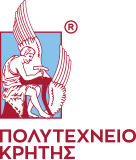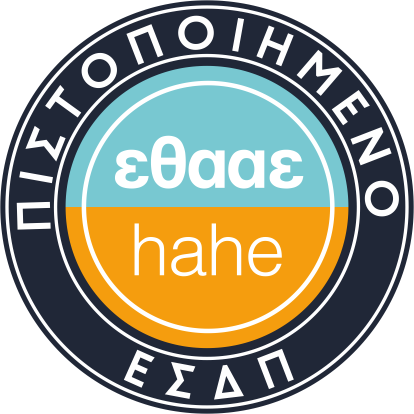Ημερολόγιο Εκδηλώσεων
14
Δεκ
Κατηγορία:
Παρουσίαση Μεταπτυχιακής Εργασίας
ΗΜΜΥ
 Λ - Κτίριο Επιστημών/ΗΜΜΥ, 137Β-73
Λ - Κτίριο Επιστημών/ΗΜΜΥ, 137Β-73 14/12/2016 11:00 - 12:00
14/12/2016 11:00 - 12:00Περιγραφή:
ΠΟΛΥΤΕΧΝΕΙΟ ΚΡΗΤΗΣ Σχολή Ηλεκτρολόγων Μηχανικών και Μηχανικών Υπολογιστών Πρόγραμμα Μεταπτυχιακών Σπουδών ΠΑΡΟΥΣΙΑΣΗ ΜΕΤΑΠΤΥΧΙΑΚΗΣ ΕΡΓΑΣΙΑΣ ΧΡΗΣΤΟΥ ΡΩΣΣΟΥ με θέμα Development of Coherent and Incoherent Light Source with Computer Control of their Spectral Emission for Biomedical Applications. Εξεταστική Επιτροπή Καθηγητής Κωνσταντίνος Μπάλας (επιβλέπων) Καθηγητής Μιχαήλ Ζερβάκης Καθηγητής Διονύσιος Πνευματικάτος Abstract The subject of this Master thesis is the design, prototyping and technical evaluation of advanced light sources offering distinct advantages over the conventional one. Conventional black-body or gas discharge light sources are still very popular, they suffer however from a long list of shortcomings including but not limited to: ramp-like spectral emission, heating, uncontrolled sparks (short-peaks) in their emission spectra, limited ability to control their intensity distribution along their emission wavelength range etc. This thesis addresses the demand for alternative light sources, free from the above mentioned limitations. To this end, two kinds of solid state light sources were developed based on the optical multiplexing of distinct, narrow band LED and LASER light sources. In the first case an array of LEDs was developed with members covering the spectral range from ultraviolet to near infrared. The LEDs were coupled with the multiple ending of a custom made polifurcated fiber optic bundle, thus achieving an excellent multiplexing. Specially developed hardware controllers were employed for controlling the intensity distribution across the entire wavelength range of the multi-LED light sources. The intensity distribution could, under computer control, take the ‘flat’ spectral profile corresponding to an ‘absolute white’ light source. Alternatively, it could take the form of spectrum with peaks and deeps in wavelength ranges defined by the user. The second development corresponds to a multiple wavelength laser source with the option of controlling the relative intensity of LASER lines. All LASER lines are multiplexed in a liquid light-guide for achieving beam homogenization. A major challenge that was faced when the multilaser source was used for imaging was the so-called ‘speckle’ effect. This effect introduced fixed random pattern noise effects in imaging applications due to the local interference of the coherent LASER Light. This issue was effectively solved with the employment of a vibrating diffuser interposed in the beam’s path. The vibrating diffuser destroyed partially the coherent nature of the laser beam, thus minimizing interference effects and reduce the speckle phenomena. The developed light sources are currently used in a series of applications such as fluorescence microscopy, wavelength response calibrator, multispectral imaging, study of eye response to control optical stimuli etc. Additional applications are currently on their development stage, while further improved designs are scheduled for the near future.
ΠΟΛΥΤΕΧΝΕΙΟ ΚΡΗΤΗΣ Σχολή Ηλεκτρολόγων Μηχανικών και Μηχανικών Υπολογιστών Πρόγραμμα Μεταπτυχιακών Σπουδών ΠΑΡΟΥΣΙΑΣΗ ΜΕΤΑΠΤΥΧΙΑΚΗΣ ΕΡΓΑΣΙΑΣ ΧΡΗΣΤΟΥ ΡΩΣΣΟΥ με θέμα Development of Coherent and Incoherent Light Source with Computer Control of their Spectral Emission for Biomedical Applications. Εξεταστική Επιτροπή Καθηγητής Κωνσταντίνος Μπάλας (επιβλέπων) Καθηγητής Μιχαήλ Ζερβάκης Καθηγητής Διονύσιος Πνευματικάτος Abstract The subject of this Master thesis is the design, prototyping and technical evaluation of advanced light sources offering distinct advantages over the conventional one. Conventional black-body or gas discharge light sources are still very popular, they suffer however from a long list of shortcomings including but not limited to: ramp-like spectral emission, heating, uncontrolled sparks (short-peaks) in their emission spectra, limited ability to control their intensity distribution along their emission wavelength range etc. This thesis addresses the demand for alternative light sources, free from the above mentioned limitations. To this end, two kinds of solid state light sources were developed based on the optical multiplexing of distinct, narrow band LED and LASER light sources. In the first case an array of LEDs was developed with members covering the spectral range from ultraviolet to near infrared. The LEDs were coupled with the multiple ending of a custom made polifurcated fiber optic bundle, thus achieving an excellent multiplexing. Specially developed hardware controllers were employed for controlling the intensity distribution across the entire wavelength range of the multi-LED light sources. The intensity distribution could, under computer control, take the ‘flat’ spectral profile corresponding to an ‘absolute white’ light source. Alternatively, it could take the form of spectrum with peaks and deeps in wavelength ranges defined by the user. The second development corresponds to a multiple wavelength laser source with the option of controlling the relative intensity of LASER lines. All LASER lines are multiplexed in a liquid light-guide for achieving beam homogenization. A major challenge that was faced when the multilaser source was used for imaging was the so-called ‘speckle’ effect. This effect introduced fixed random pattern noise effects in imaging applications due to the local interference of the coherent LASER Light. This issue was effectively solved with the employment of a vibrating diffuser interposed in the beam’s path. The vibrating diffuser destroyed partially the coherent nature of the laser beam, thus minimizing interference effects and reduce the speckle phenomena. The developed light sources are currently used in a series of applications such as fluorescence microscopy, wavelength response calibrator, multispectral imaging, study of eye response to control optical stimuli etc. Additional applications are currently on their development stage, while further improved designs are scheduled for the near future.













